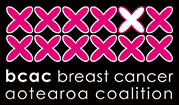A recently published paper by a New Zealand surgeon comparing breast cancer survival rates in Australia and New Zealand reveals lower overall survival rates at five years for New Zealand women, with Māori and Pacific survival found to be significantly worse than other ethnicities.
Using data from the Quality Audit (BQA) of Breast Surgeons of Australia and New Zealand, the largest New Zealand breast cancer database outside of the NZ Cancer Registry, breast cancer survival was compared by ethnicity, deprivation, remoteness, clinical characteristics and caseload. The database covered around 50% of early breast cancer diagnosed from 1998-2010 and survival times were calculated from the date of diagnosis until 31 December 2010 or the time of death.
Results showed that overall 90% of women with breast cancer in New Zealand were still alive five years after diagnosis compared with 93% of women in Australia. For Māori and Pacific women this figure was significantly lower at 87% and 84% respectively.
Associate Professor and general surgeon Ian Campbell, lead study author at Waikato Hospital said: “While the mean absolute differences at 5 years are small, they are dramatically worse for Māori and Pacific women and as breast cancer is a relatively slowly progressive disease in most cases, we know these absolute differences will more than double at 10-15 years’ follow up, and likely be much greater for women with more advanced and more aggressive disease.”
While the authors acknowledge more research needs to be done as to why the differences exist they suggest that the 3% survival disparity may reflect real differences between the two countries in patient risk profiles, access, timeliness and quality of health services, and the impact of ethnic inequities on total survival. “Indeed, during this time frame, there were well known examples of difficulties with access to treatment and shortages in radiation therapy resource in a number of NZ regions, resulting in some women being transferred to Australian centres for treatment.” [Campbell et al, Breast Cancer Survival in New Zealand women, Sept 2014, P6]
Another possible factor highlighted was that funding of trastuzumab therapy (Herceptin) in New Zealand started some time after Australia and initially only for nine weeks of therapy. Similarly, taxanes were approved years later in New Zealand than in Australia. Both medicines have since been shown to have a significant survival benefit for patients.
BCAC Chair Libby Burgess says that the lower survival rate for New Zealand women is of deep concern. "Every year 3,000 kiwi women are diagnosed with breast cancer. Given that our overall five-year survival rate is 3% worse than Australia’s, in five years’ time 90 of these New Zealand women will have lost their lives to breast cancer unnecessarily. The numbers are far worse for Māori and Pacific women. This disparity highlights the critical need for faster diagnosis and treatment. While the government is starting to focus resources in this area, more needs to be done as our access to innovative life-saving medicines remains slow and limited. This must change if we are to bridge this appalling gap."
11 Feb 2015



